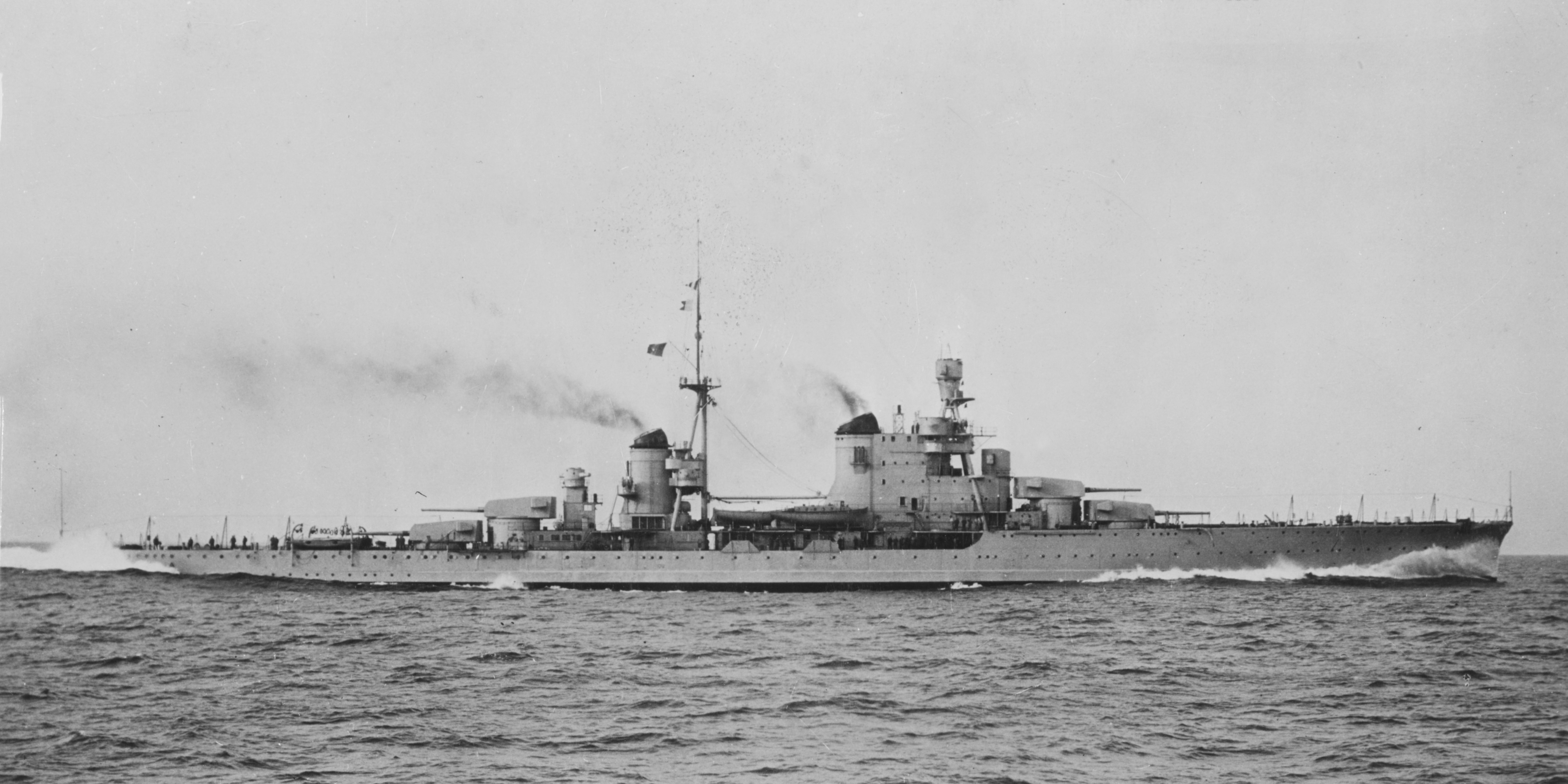
The Pola was a heavy cruiser of the Royal Navy, belonging to the class Zara, built in the yards of OTO Livorno and entered service in 1932. It was sunk during the Second World War at the Battle of Cape Matapan (March 29, 1941).
After intense activity in peacetime - in February 1939, he was rammed by a destroyer in the Gulf of Taranto, the Pola at the beginning of the Second World War was framed in the II First Team as the headquarters of the command team with the sign of ‘Admiral Riccardo Paladini. During the conflict, a total of twelve combat missions.
He participated in fighting at the Battle of Punta Stilo on July 9, 1940, as the flagship of the Second Team.
On 31 August of the same year, I was part of, this time framed in the Cruiser Division with twins Zara, Fiume, and Gorizia, the Italian team out to sea to fight the British operation “Hats.” This exit, however, led to a stalemate because it did not make contact with the British fleet.
On November 26, again, as a flagship of the Second Team (comandanta at that time by ‘Admiral Angelo Iachino), took part in the Battle of Cape Teulada.
On the evening of 14 December 1940, while moored in the port of Naples, was hit by two bombs plane, with 22 deaths and a gash in the hull.
Repaired and assigned to the Division, he took part in the war cruising in the eastern Mediterranean at the end of March 1941, which should have led to an attack on British trade in the area and culminated in the clash of Gavdos and the Battle of Cape Matapan.
Indirectly, the Pola caused the so-called “small Caporetto the Royal Navy.” In fact, after the torpedoing of the flagship Vittorio Veneto, other units were assembled all around the affected unit to defend it from further air attacks. It was during one of these attacks that a Fairey Albacore torpedo struck the Pola with a hero by disabling motor apparatus and electrical system (and, consequently, also the main armament) and leaving him tied up in the middle of the sea.
With a controversial decision, Admiral Angelo Iachino ordered the rest of Division I (Zadar and Rijeka) and IX Destroyer Squadron (Alfieri, Oriani, Gioberti, Carducci) to rescue the Pola when you said later would have been sufficient for the ‘assistance and towing two destroyers (as well as the’ Admiral Carlo Cattaneo, commander of the First Division, had suggested). The rescue took rescuers Italian units within walking distance of the British battleship Admiral Cunningham, unseen, opened fire, sinking Zadar, Rijeka, Alfieri, and Carducci.
The Pola remained motionless in the battle because he was unable to fire (the blackout, caused by the dismissal, prevented the use of artillery) and was then joined by destroyers Jervis and Nubian, who recovered the crew and subsequently torpedoed. The Pola, shaken by an explosion, sank at 4.03 on March 29, the last Italian ship to be lost in the clash. Much of the crew was rescued by Gaetano Tavoni, then, for the tremendous effort, he died of a heart attack, and his body was never found.
It was reported at the time that the British sailors boarded the Pola, and they found the crew in a state of drunkenness. This is explained by the fact that, when aerosiluramento, many sailors were thrown into the sea believing the next sinking ship, then edged up wet on board, there was no way to warm them if not with alcohol on board.
In percentage terms, the losses of Pola were much lower than those of other units; this is due to the fact that the ship was shelled by the British battleships but sunk a second time after being abandoned by the crew. However, it was a high number of casualties: 328 men died on board in 1041. All the survivors, including the commander CV Manlio De Pisa, were taken prisoner.